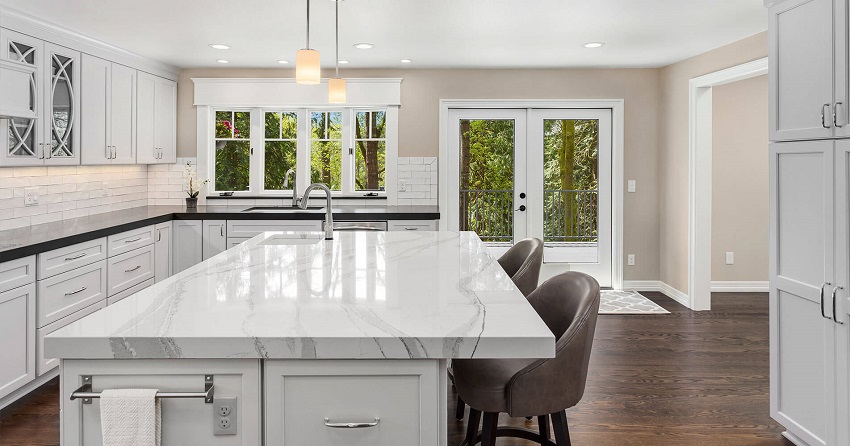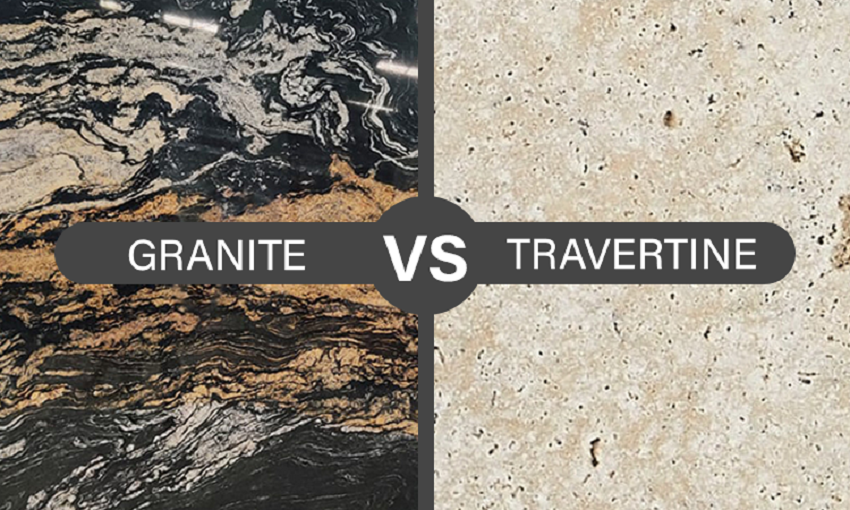When it comes to choosing materials for countertops, flooring, or other architectural elements, two popular choices that often come to mind are travertine and granite. Both are natural stones with unique qualities, but the question remains: Is travertine stronger than granite? In this article, we will delve into the characteristics of both materials, exploring their strengths and weaknesses, to help you make an informed decision. The content is brought to you by Decoracaos.com.
Understanding Travertine and Granite
What is Travertine?
Travertine is a sedimentary rock that forms from mineral deposits, usually found in hot springs or limestone caves. It is a type of limestone, but it has a distinct appearance characterized by its porous nature, which results in small holes and pitted texture. Travertine marble comes in various colors, including beige, ivory, and walnut, giving it a natural, earthy look that appeals to many homeowners and designers.
What is Granite?
Granite, on the other hand, is an igneous rock that forms from the cooling and solidification of molten magma beneath the Earth’s surface. It is composed mainly of quartz, feldspar, and mica, giving it a unique crystalline structure. Granite is known for its strength and durability, making it a preferred choice for high-traffic areas and heavy-use applications.
Strength and Durability: A Comparative Analysis
1. Hardness
Granite is renowned for its exceptional hardness, ranking high on the Mohs scale, which measures a material’s resistance to scratching. On the Mohs scale, granite typically scores between 6 and 7, indicating its ability to withstand everyday wear and tear.
On the other hand, travertine is softer than granite, with a Mohs scale rating of around 4 to 5. While still durable, travertine is more susceptible to scratching and chipping over time, especially in high-traffic areas.
2. Impact Resistance
Granite’s toughness gives it excellent impact resistance, making it highly suitable for use in kitchen countertops and flooring. It can withstand the impact of heavy objects without cracking or breaking easily.
Travertine, while durable, may not handle heavy impacts as well as granite. It is essential to exercise caution and avoid dropping heavy items on travertine surfaces to prevent potential damage.
3. Porosity
One significant difference between travertine and granite is their porosity. Travertine’s porous nature makes it more vulnerable to stains and water damage. Without proper sealing, liquids can penetrate the surface and leave stains behind.
On the contrary, granite has a low level of porosity, making it more resistant to staining and water damage. Proper sealing is still recommended for granite, but it generally requires less maintenance compared to travertine.
4. Heat Resistance
Both travertine and granite have good heat resistance, making them suitable for use around stovetops and fireplaces. However, granite has a slight advantage in this aspect due to its higher density, allowing it to withstand higher temperatures without damage.
The Aesthetics of Travertine and Granite
1. Appearance
Travertine’s unique and warm appearance adds a touch of elegance to any space. Its natural variation in color and texture creates a visually appealing surface that complements various interior design styles.
Granite, with its mesmerizing patterns and rich colors, also offers a stunning visual appeal. The polished surface of granite reflects light, giving it a luxurious and high-end look.
2. Versatility
Both travertine and granite come in various colors and finishes, providing homeowners and designers with a range of options to match their preferences and design concepts.
Maintenance and Care
1. Cleaning
Regular cleaning is essential for both travertine and granite to maintain their beauty and longevity. However, due to its porous nature, travertine requires extra care to prevent stains and discoloration.
Granite, being less porous, is easier to clean and maintain. Wiping spills immediately and using a gentle pH-balanced cleaner is usually sufficient to keep granite surfaces in pristine condition.
2. Sealing
As mentioned earlier, sealing is essential for both materials. Travertine should be sealed more frequently, ideally every six months to a year, while granite may require resealing every two to three years.
Conclusion
The question of whether travertine is stronger than granite depends on the context of use and individual preferences. If you prioritize hardness and durability, granite is the clear winner. On the other hand, if you value the unique and warm appearance of travertine and are willing to provide extra care and maintenance, it can be an excellent choice for various applications.
Whether you choose travertine or granite, both materials offer their distinct charm and elegance, adding value and beauty to your space for years to come.
FAQs
Is travertine suitable for kitchen countertops?
Yes, travertine can be used for kitchen countertops, but it requires more maintenance and care due to its porosity.
Can granite handle heavy impacts?
Yes, granite is known for its excellent impact resistance and can handle heavy impacts without cracking easily.
Does travertine require sealing?
Yes, travertine should be regularly sealed to protect it from stains and water damage.
Is granite more expensive than travertine?
The cost of both materials can vary depending on the quality and availability, but generally, granite tends to be more expensive than travertine.
Can travertine be used outdoors?
While travertine can be used outdoors, it is essential to consider its porosity and potential vulnerability to weathering over time. Proper sealing and maintenance are crucial for outdoor applications.

